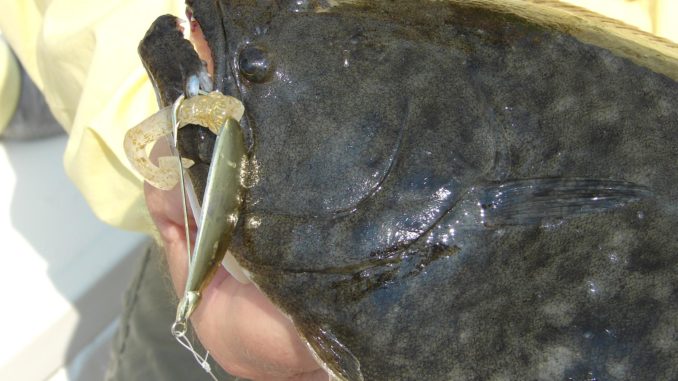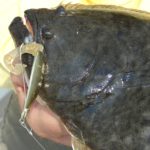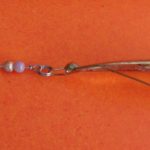
Weedless casting spoons deserve more work
I don’t remember exactly when I became such a big fan of using spoons for inshore and nearshore fishing, but it was a good day and a great choice. I’m not talking about trolling spoons for Spanish and king mackerel or jigging spoons for bottomfish, but weedless casting spoons; I have become an ardent user and staunch promoter of their kind.
The word is slowly spreading, and the stunned looks and blank gazes aren’t as bad as they were even a handful of years ago, but I still get some serious questions and lots of fishermen expressing doubts when I mention spoons as a regular part of seminars and programs I do throughout the year.
So, just what are weedless casting spoons, and what do I catch with them? They are the small to medium, cupped spoons that use a single J-hook and have some sort of weed guard so the spoon will pull through light growth without snagging or loading up the hook with grass and other weeds.
In North Carolina, weedless spoons are primarily considered to be lures used to target puppy drum. They do a good job with pups and also catch flounder, plus occasional trout and ladyfish. Bluefish and Spanish mackerel also hit them when used in the surf or around inlets.
The weedless casting spoon most fishermen think of first is the Johnson Silver Minnow, which was introduced by the Johnson Lure Company in 1923. It was the original “Weedless Wonder” that included a weed guard in front of the hook and allowed it to be cast into cover or grass and come out clean and weed free. When attached using a loop knot, weedless spoons should have a wobbling action that rocks from side to side, but doesn’t spin and doesn’t require a swivel to prevent line twist.
My introduction to these spoons came courtesy of the Johnson Silver Minnow. I always thought it was just a little strange that I was fishing a Silver Minnow, but it was never silver. Over several decades, I have had the best success with the gold color but have also caught fish well using the black spoon and the one with some green on it. Johnson also makes a Sprite Spoon, but it has a treble hook and is not weedless.
Other companies that make weedless casting spoons include Precision Tackle, Aqua Dream Living, Bomber, United Plastic Molders, Cape Lookout Lures, H&H Lures, Bass Pro Shops, Eppinger, Fin-Tech, Gator, Nemire, Northland, Dardevle, Cabela’s — are probably more. A few are pretty direct copies, but some have a feature or difference they promote as making their spoons better. There are some slight differences in actions and sounds.
I have not used all of these spoons but have tried all I have found. While all of them have caught fish, my favorites are the Flats Intruder from Precision Tackle, the Aqua Dream from Capt. Mike Hakala at Aqua Dream Living and the Norton Brass Rattler from United Plastic Moulders.
Precision Tackle, which makes the Flats Intruder, also makes Cajun Thunder popping floats. The Flats Intruder has stronger hooks, larger hooks in the smaller sizes and better plating. I have had issues with corrosion and hooks breaking on several of the other brands, but not on the Flats Intruders.
I don’t get to use the Aqua Dream spoons a lot in my home area because of strong tides, but I really like them for the shallow pools away from main channels and an hour or so before and after tide changes when the tide isn’t moving much. Aqua Dream spoons have a lot of flutter, but the design that creates the extra flutter also allows strong tides and currents to sweep them off the bottom, and I prefer to fish them right across the bottom. The construction holds up well, and the scale pattern on the back of the spoon creates a lot of flash to get them noticed.
Few sportsmen could look at the Norton Brass Rattler spoons and not smile. Their trademark is the rattle, which is created by putting a metal ball in .32 and .38 caliber pistol brass that is molded to the inside of the spoon. The rattle is loud and can attract fish from a long way. I don’t see as much action retrieving Norton Brass Rattlers, but I fish a lot of dirty water, and I believe there are times the rattle definitely helps call the fish in.
Those who know me know I like to tinker with lures to fit my personal fishing style. As I fish a lot of dirty water, my main tweak is doing things to help get the lures noticed. My go-to spoon is the Flats Intruder, and I usually fish it in either gold or copper. These colors give some flash to help get it noticed without being too bright.
I like to add either a gold spinner in front of the spoon or just the tail of a curlytail grub as a trailer attached to the hook. Both additions produce, but do it differently.
I prefer to add the spinner in line with the spoon, rather than with the L-arm spinners that are pretty readily available. The L-arm spinners tend to cause the spoon to spin, and it should only rock back side to side. The in-line spinner allows the spoon to rock side to side, but adds some flash and vibration. Johnson used to offer Silver Minnow spoons with the in-line spinner for musky and pike fishermen, but they has been discontinued for at least 10 years.
In-line spinners are difficult to find. I have some made by Bayou Buck’s Tackle in Texas, but I usually have to buy lures using the in-line spinner and move it to my spoon. My other source has been spinnerbait manufacturers that attend the area boat and fishing shows.
Several manufacturers offer trailers on their spoons to attract fish. Most use curlytail grubs, but they extend them too far back for me. I like just the curl of the tail extending beyond the hook. I buy bags of curlytail grubs and cut them, leaving about 1/4-inch of the body attached to the tail to secure it using the hook.
Manufacturers that attach trailers typically position them so the tail curls up the same way as the hook. I place the tail on so it is sideways rather than vertical. In this configuration, the water curling off the side of the spoon starts the tail fluttering at a slower speed. Rigged this way, I can use the spoon during the heat of the summer and cool of the winter when a slow retrieve speed is needed.
I have also experimented with adding a Clark Caster or weights in front of Aqua Dream spoons to help hold them down in strong currents. The Clark Caster is easiest to add as it just snaps to the eye of the spoon and adds a spinner. Clark Casters are available in 1/8-, 1/4- and 1/2-ounce weights, in a choice of gold or silver spinner.
The other way to add weight to an Aqua Dream spoon, without affecting its action, is to fish it on a Carolina Rig. This way the sinker weight is variable and can be positioned the leader length in front of the spoon and have minimal affect on the flutter of the spoon. I have found eight to 15 inches works for me. Both of these ideas work, but I’m still fine tuning it and would welcome any suggestions.
If you don’t already have a few weedless casting spoons in your tackle box, consider adding them. Being weedless is a major plus and allows them to be used in situations where other lures would stay hung up and fouled. Many times, the fish are holding in these places with lots of weeds and lure-gobbling structure. Weedless casting spoons should be considered a primary lure for redfish, but they also catch a surprising number of flounder and attract large speckled trout. I’ve used them with good success from Virginia to Texas. They should work well for you, too.






Be the first to comment